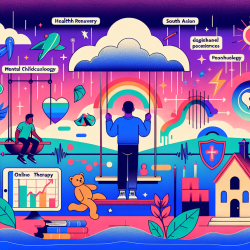Introduction
In the ever-evolving landscape of climate change, understanding the implications of sea level rise (SLR) is crucial for practitioners across various fields. The research article "A High-End Estimate of Sea Level Rise for Practitioners" by van de Wal et al. (2022) offers valuable insights into the potential future scenarios of SLR, providing a robust framework for practitioners to make informed decisions. This blog post explores how practitioners can leverage these findings to enhance their skills and improve outcomes in their respective domains.
The Importance of High-End Estimates
High-end estimates of SLR are critical for practitioners who are involved in policy analysis, risk assessment, and adaptation planning. The research emphasizes the need for practitioners to consider plausible future conditions that lie in the tails of the SLR distribution, which are often not well-defined by existing models. By understanding these high-end scenarios, practitioners can better prepare for extreme outcomes and develop more resilient strategies.
Implementing Research Findings
Practitioners can implement the outcomes of this research in several ways:
- Risk Assessment: Utilize high-end SLR estimates to evaluate potential risks and vulnerabilities in coastal areas. This approach allows for more comprehensive risk management strategies that account for worst-case scenarios.
- Policy Development: Inform policy decisions with data-driven insights from high-end SLR projections. By incorporating these estimates, policymakers can create more robust frameworks that address long-term climate impacts.
- Adaptation Planning: Develop adaptive strategies that are flexible and responsive to high-end SLR scenarios. This ensures that adaptation measures remain effective even under extreme conditions.
Encouraging Further Research
While the current research provides a solid foundation, it also highlights areas where further investigation is needed. Practitioners are encouraged to delve deeper into the following topics:
- Ice Shelf Dynamics: Understanding the timing and processes driving ice shelf collapse is crucial for refining SLR projections.
- Emission Scenarios: Explore the relationship between emission scenarios and SLR outcomes to better predict future changes.
- Regional Impacts: Investigate how high-end SLR estimates affect specific regions differently, allowing for tailored adaptation strategies.
Conclusion
By integrating high-end SLR estimates into their practices, practitioners can enhance their decision-making processes and contribute to more effective climate change mitigation and adaptation efforts. The insights provided by van de Wal et al. (2022) serve as a valuable resource for practitioners seeking to improve their skills and achieve better outcomes.
To read the original research paper, please follow this link: A High-End Estimate of Sea Level Rise for Practitioners.










